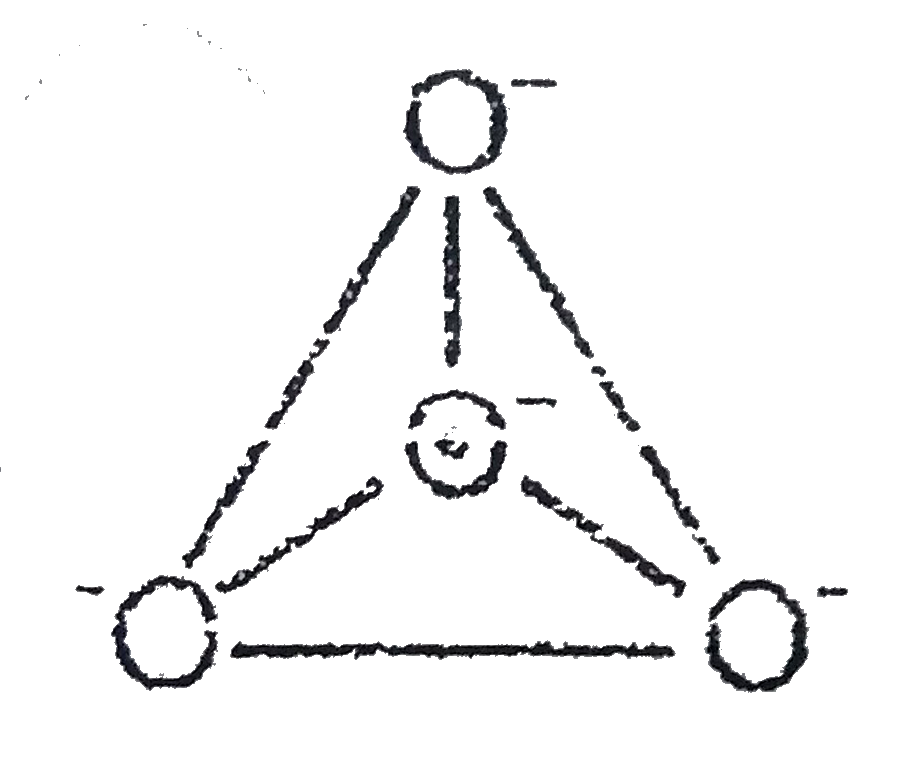Despite having an aldehydic group
Draw the Haworth structure of a-D-(+) gluco-pyranose
To draw the Haworth structure of α-D-(+)-glucopyranose, we will follow these steps:
Step 1: Draw the Fischer Projection of D-Glucose
Start by drawing the Fischer projection of D-glucose. It consists of six carbon atoms (C1 to C6), with the aldehyde group at C1 and hydroxyl (OH) groups on the other carbons. The structure looks like this:
CHO|H−C−OH|HO−C−H|H−C−OH|H−C−OH∣CH2OH
Step 2: Identify the Anomeric Carbon
In the Fischer projection, the anomeric carbon is C1, which is the carbon that will form a bond with the oxygen atom to create the ring structure.
Step 3: Form the Ring Structure
To form the ring, we will react the hydroxyl group on C5 with the aldehyde group on C1. This will create a six-membered ring (pyranose form). The oxygen from the hydroxyl group on C5 will bond with C1, and a water molecule will be released.
Step 4: Rotate the Structure
Next, rotate the structure by 90 degrees to visualize the cyclic form. The oxygen atom will be at the top of the ring, and the carbon atoms will be arranged in a clockwise manner.
Step 5: Assign the Configuration
In the α-anomer, the hydroxyl group on the anomeric carbon (C1) is positioned down (below the plane of the ring). In contrast, in the β-anomer, it would be positioned up (above the plane of the ring).
Step 6: Complete the Haworth Structure
Now, we can complete the Haworth structure. The final structure will look like this:
OHO−CC−H||H−−CC−OH||H−−CC−H CH2OH
Step 7: Label the Structure
Label the carbons (C1 to C6) and indicate that this is the α-D-(+)-glucopyranose structure. The hydroxyl group on C1 is down, confirming that it is the alpha form.
Summary of the Structure
- The ring structure is a six-membered pyranose.
- The configuration at the anomeric carbon (C1) is down, indicating it is the α-anomer.
- The positive sign (+) indicates that it is dextrorotatory.
Start by drawing the Fischer projection of D-glucose. It consists of six carbon atoms (C1 to C6), with the aldehyde group at C1 and hydroxyl (OH) groups on the other carbons. The structure looks like this:
In the Fischer projection, the anomeric carbon is C1, which is the carbon that will form a bond with the oxygen atom to create the ring structure.
To form the ring, we will react the hydroxyl group on C5 with the aldehyde group on C1. This will create a six-membered ring (pyranose form). The oxygen from the hydroxyl group on C5 will bond with C1, and a water molecule will be released.
Next, rotate the structure by 90 degrees to visualize the cyclic form. The oxygen atom will be at the top of the ring, and the carbon atoms will be arranged in a clockwise manner.
In the α-anomer, the hydroxyl group on the anomeric carbon (C1) is positioned down (below the plane of the ring). In contrast, in the β-anomer, it would be positioned up (above the plane of the ring).
Now, we can complete the Haworth structure. The final structure will look like this:
Label the carbons (C1 to C6) and indicate that this is the α-D-(+)-glucopyranose structure. The hydroxyl group on C1 is down, confirming that it is the alpha form.
- The ring structure is a six-membered pyranose.
- The configuration at the anomeric carbon (C1) is down, indicating it is the α-anomer.
- The positive sign (+) indicates that it is dextrorotatory.
Topper's Solved these Questions
- BIOMOLECULESBOOK - ICSECHAPTER - BIOMOLECULESEXERCISE - EXERCISE (PART-II)(DESCRIPTIVE QUESTIONS)(LONG ANSWER QUESTIONS)
31 Videos
- BIOMOLECULESBOOK - ICSECHAPTER - BIOMOLECULESEXERCISE - ISC EXAMINATION QUSTIONS (PART-I)(DESCRIPTIVE QUESTIONS)
21 Videos
- BIOMOLECULESBOOK - ICSECHAPTER - BIOMOLECULESEXERCISE - EXERCISE (PART-II)(DESCRIPTIVE QUESTIONS)(VERY SHORT ANSWER QUESTIONS)
85 Videos
- APPENDIX II ( TYPICAL CONVERSIONS)BOOK - ICSECHAPTER - APPENDIX II ( TYPICAL CONVERSIONS)EXERCISE - AROMATIC CONVERSIONS
98 Videos
- CHEMICAL KINETICSBOOK - ICSECHAPTER - CHEMICAL KINETICSEXERCISE - ISC EXAMINATION QUESTIONS (NUMERICAL PROBLEMS )
57 Videos
Similar Questions
Draw the furanose ring structure of α -D- fructose
View SolutionDespite having an aldehydic group
What is the significance of D and (+) here?
View SolutionDraw the structures of α-D-glucose and β-D-glucose
View SolutionExplain why :
(i) Glucose is soluble in water but cyclohexane is not.
(ii) Aldehyde group is absent in the pentaacetate of D-glucose.
View SolutionHow do you explain the absence of aldehyde group in the pentaacetate of D-glucose ?
View SolutionThe group having triangular planar structures is :
View SolutionWrite chemical reaction to show that open structure of D-glucose contains the following:
(i) Straight chain
(ii) Five alcohol groups
(iii) Aldehyde as carbonyl group
View Solution(a) Name any three functional groups present in carbon compounds and write their formulae.
(b) Draw the structures of the following compounds indicating the functional group present in each , propanal, propanone, propanoic acid, propanol
View SolutionAn element is placed in 2nd group and 3rd period of the periodic table, burns is presence of xygen of form a basic oxide
(a) Identify the element
(b) Write the electronic configuration
(c) Write a balanced equation when it burns in the presence of air
(d) Write a balanced when this oxide is dissolved in water
(e) Draw the electron dot structure for the formation of this oxide.
View SolutionSilicon is the second most abundant element (~27.2%) in the earth's after oxygen (45.5%) Carbon. Silicon, germanium, tin and lead constitute the group 14 of the periodic table. Chemistry of silicon is distinctly different from that of carbon.
For example, under standard conditions CO2 is a gas whereas SiO2 is a covalent solid.
Draw the structure of a cyclic silicate having structural formula of [Si6O18]n−.Also determine the value of n
[Hint : SiO4−4 can be shown as unit]
unit]
View Solution
